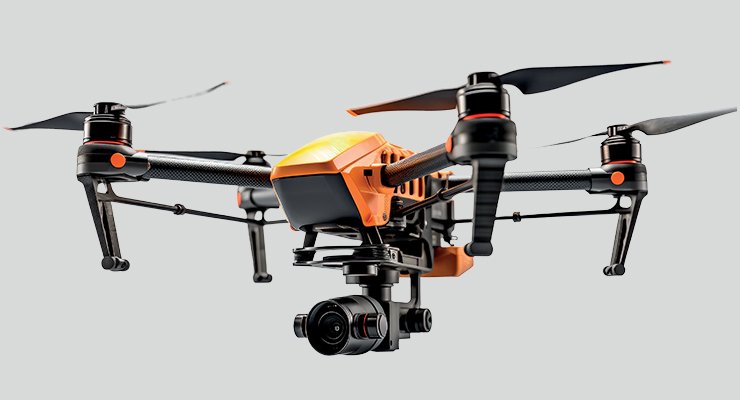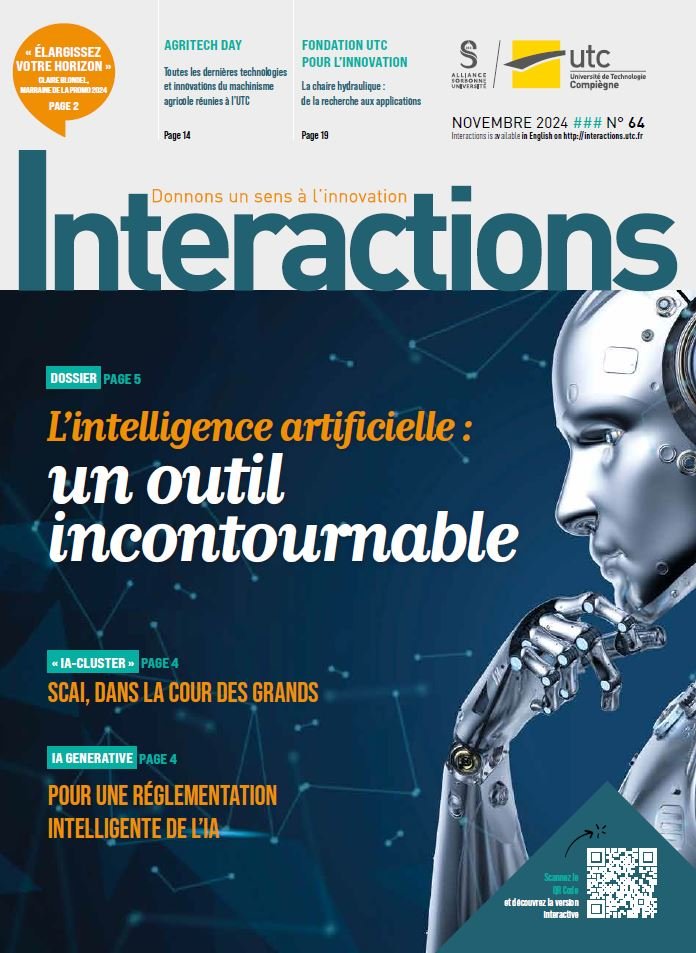Algorithms in the age of the quaternion

Pedro Castillo, CNRS research-scientist at UTC’s Heudiasyc Laboratory, is co-leader of the Robotic Interaction Systems (SyRI) team. Specialized in automatic control applied to robotics, he is also in charge of the unit’s «drones» activities.
Pedro Castillo and drones go back a long way, since he started his thesis at UTC in 2000, focussing on the automatic control of drones. In early 2004, this thesis won him the national prize for the best thesis in automatic control. In 2005, he joined the CNRS at the Heudiasyc UTC joint research unit, where he continued his research into miniature drone control. The ASER team, later renamed SyRI, was one of the first to work on the subject and was one of the first to develop an autonomous four rotor drone.
At the time, this research was carried out using very conventional methods, based in particular on one of the Newton-Euler theories. Since then, the team has changed its approach to one based on the so-called quaternion.
In concrete terms? «The quaternion is a mathematical approach that can represent the rotations of a body in three dimensions. Applied to UAVs (unmanned aerial vehicles), it enables us to develop more robust and powerful algorithms to precisely control the orientation and speed of a given UAV or object. It also enables us to design control and prediction schemes, particularly in the event of an attack on the drone. In this situation, we can make it fly at very high speed, decelerate very quickly or change its trajectory», explains Pedro Castillo.
Up to now, whereas drones navigated with inclinations of less than 10°, SyRI’s researchers have succeeded, thanks to their new approach, in making them do pirouettes too. It may sound trivial, but the potential applications are real. «Imagine a madman holding a family in a house with a slightly open window. The drone can sneak in and give the police the topography of the scene, the location of the hostages and the intruder, etc., with minimal risk of being shot down, since it can accelerate or change trajectory very quickly. We’re also working on a drone that can be launched like a boomerang, and which, even though its motors are not switched on, will stabilize itself in flight autonomously. It will then follow the instructions given to it by the operator, such as chasing a target, taking photos, etc. This will be very useful for our work in the field. This will be very useful for firefighters, for example,» he assures us.
The quaternion approach has enabled them to extend their research to heterogeneous cooperation, i.e., interaction between an aerial vehicle and an autonomous ground vehicle and to move from working on a single agent to multiagent UAVs. In other words, several drones cooperating.
In the first case, the aim is to ensure that the exchange of information between the two vehicles is as precise as possible. «Take a phenomenon like an earthquake. The drone can go where the ground vehicle cannot, and vice versa. In this scenario, co-operation between the two and the exchange of precise information between the two can be vital for survivors,» he says.
In the second case, their work focusses on the drone/anti-drone issue, in response to a call for projects from the French National Research Agency (ANR). The call for projects was prompted by the explosion in the number of drones possessed and flown by individuals and the multiple overflights of sensitive areas such as nuclear power plants and airports. «The idea is to mobilize a fleet of drones to neutralize the unwanted intruders. Even though we didn’t receive ANR funding, we continued to work on this problem. Today, we are proposing energy-based control approaches to students for the purpose of tracking the dynamic target encircling and neutralizing it. These controls turn the intruder into an «attractor» for the drones assigned this task, viz., neutralizing it, while avoiding the risk of collision. The latter can adapt both their speed and trajectory to the target’s movements», explains Pedro Castillo.
Other drone-related research projects? «We are also working with Jean-Daniel Chazot de Roberval on acoustic drones. This involves equipping drones with acoustic antennae to detect a particular sound and adapt their trajectory to the source of that sound. Take the case of an earthquake. People may still be alive but buried under rubble. A drone equipped with a camera won’t be of much use, but one with acoustic antennae can detect the cries of these people, enabling rescuers to get to their precise locations. This could also be useful for neutralizing Asian hornet nests, for example, which are often nestled high up in trees or under roofs, by tracking a hornet. A CIFRE thesis with CETIM is currently underway on this subject and another is due to start in the autumn,» he concludes.
MSD




